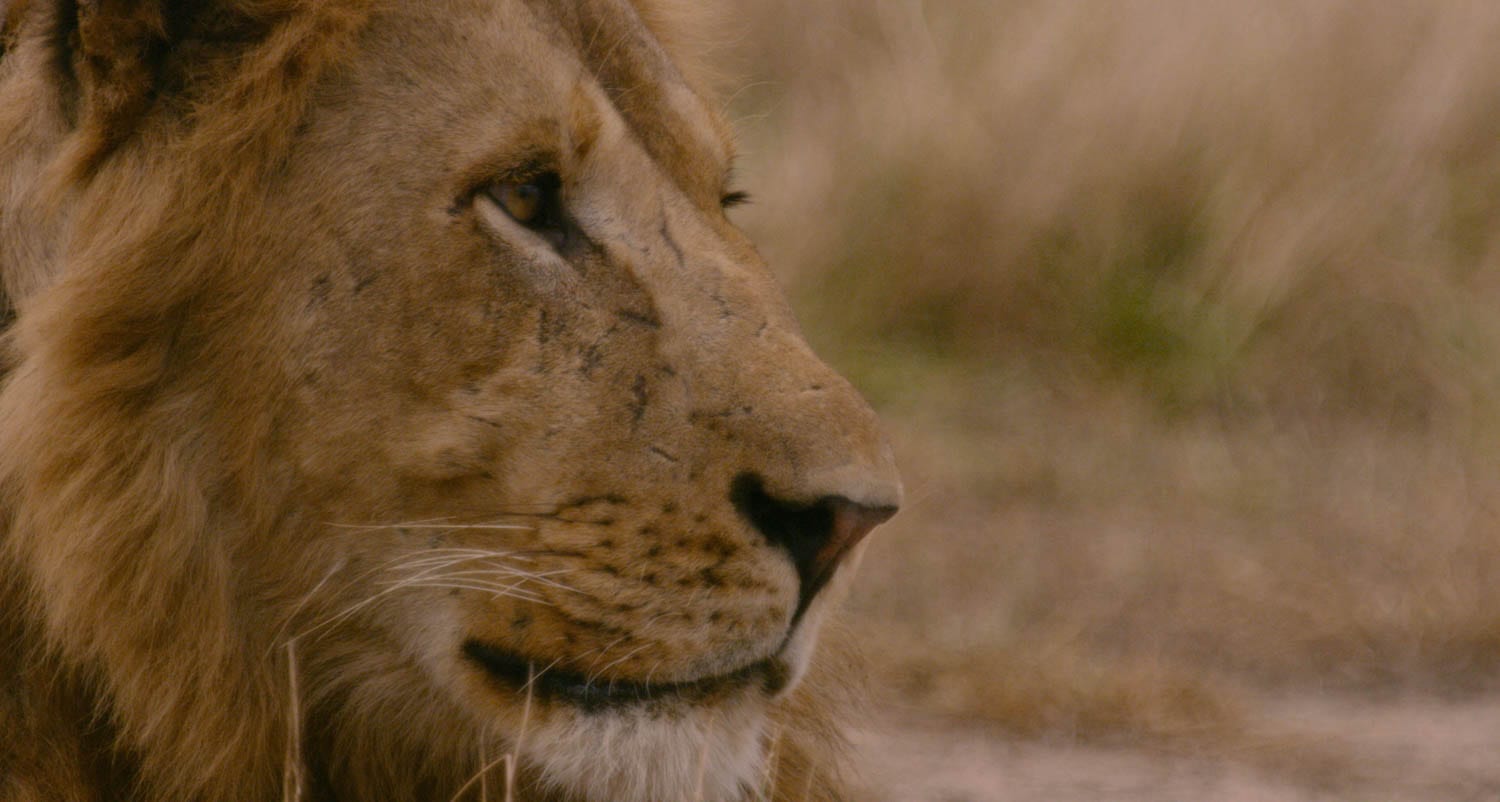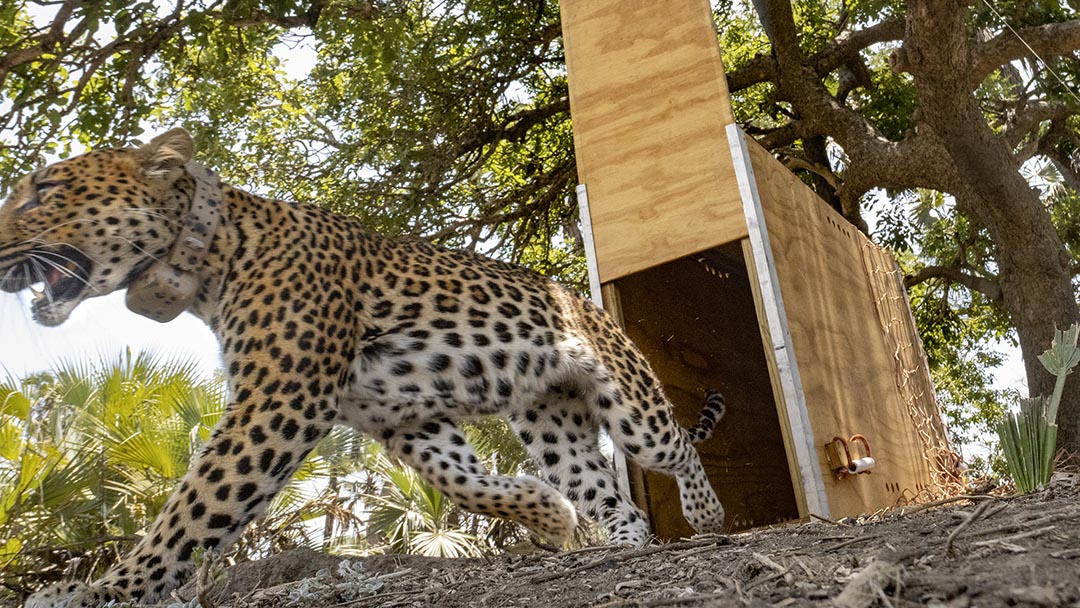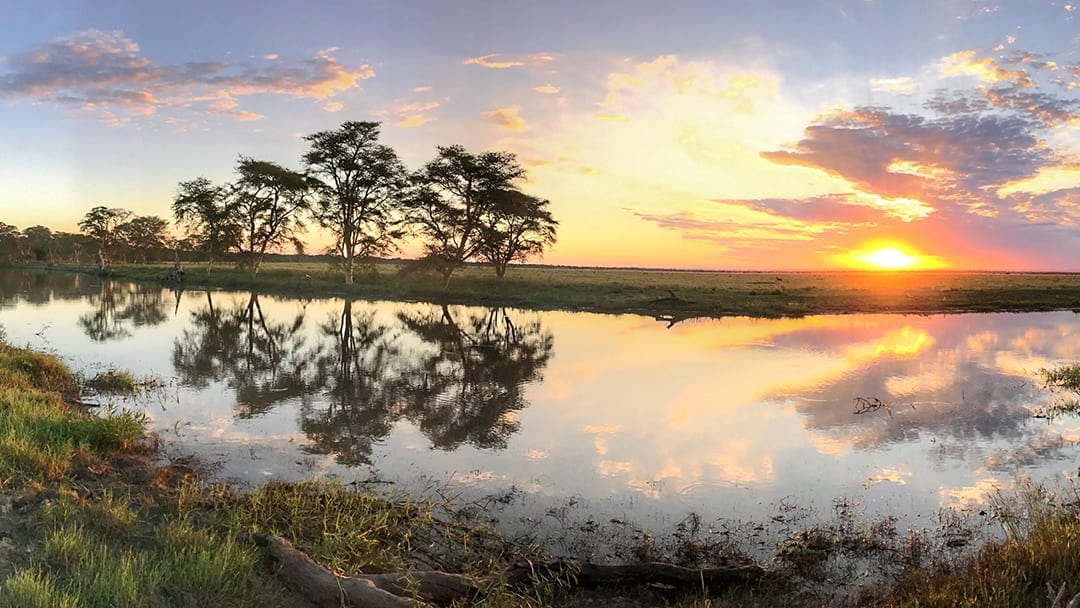Big Cats, Painted Wolves – Restoration
Our specialized team includes vets and ecologists who specialize in the protection and recovery of protected species such as lions, painted wolves, pangolin, elephant and others. Dr. Antonio Paulo and Dr. Mercia Angela are our two Mozambican veterinarians and wildlife managers who co-lead field operations alongside trainee vets and interns each year.
In 2012, we launched the first research-based, long-term, large-carnivore conservation project in the history of the Park and we focused strongly on recruiting and nurturing the next-generation of wildlife scientists, veterinarians and conservationists from Mozambique. Our team jointly monitors the recovering, indigenous lion population as well as oversee all reintroductions. In 2018, we reintroduced our 1st pack of Painted Wolves –– a critically endangered carnivore species indigenous region — as of 2021 the population is fast-approaching 100. Leopard reintroductions began in 2020, and hyaena are soon to follow.

Carnivore populations still face very deep challenges across the continent, Mozambique is no exception; the commercial bushmeat trade and habitat encroachment are the largest threats to our population at this time, threats we constantly have to counter. Our work is all-consuming, difficult, and emotionally fraught. With the crisis in Lion numbers in the wild across Africa, every lion matters. Every lion counts. Each birth is a celebration and each unnecessary death a tragedy. Preparation of trained teams of rangers and veterinarians means we can now protect lions and many other species and realize the stronghold that Gorongosa once was for the species.
Achievements

As a sentinel species, the African lion in Gorongosa National Park is a critical indicator of management success. Since 2015, we have trained and collaborated with multiple specialized ranger patrols to secure the Park’s indigenous lion population and usher in its stronger recovery. Pairing real-time and historic data of lion movements and habitat selection, rangers are now able to more strategically patrol. Poaching of lions in the Park has since approached zero.
Successfully translocated and re-established a new population of Painted Wolves to the Park, a species extirpated from the Park post-civil war.
Established a long-term “Intensive Study Area” over which we closely monitor both indigenous and reintroduced carnivore populations.
The monitoring systems we maintain and subsequent datasets we accumulate also serve multiple additional external research partners such as Princeton University and Oxford University.
The work of our team has been featured by PBS Nova, National Geographic, and the New York Times among others.

Leopard re-introduction at Gorongosa National Park, Mozambique – Photographer Piotr Naskrecki
Over the past 3 years, we took a more active approach to carnivore recovery, launching patrols to focus on anti-poaching in core lion areas we identify with the use of GPS-collars. Our teams systematically “sweep” and secure well defined blocks to find and remove snares, and creating “safe zones” – these sweeps ensure the habitat is safe for all species, but as a result there has been a 95% reduction in snaring of lions and a 65% decline in snares and traps that once killed and maimed 1/3 of lions.
Wildlife numbers in Gorongosa have been steadily climbing since the beginning of the Project, and the results of the 2018 aerial survey showed encouraging growth of large mammal populations. Some species naturally endemic to the Greater Gorongosa Area however, are in need of additional support, and the Project is working on the reintroduction of several species of herbivore and carnivore to help balance the complex interplay of animals in the ecosystem.
Another important component of ecosystem restoration is expanding the conservation footprint to beyond the current boundaries of the Park. In 2017, we entered in a formal agreement with Entroposto, who are devolving themselves of an area north of the Park that used to be called Coutada 12 – An area that was one a hunting ground where wildlife was shot – and will now become part of the larger Gorongosa Region, enabling wildlife to thrive, and someday to reclaim ancient migration corridors that once led from the Mountain to the Mangroves.
In addition, we are working closely with a large forestry concession to expand the area even further – We plan to have an additional ranger force there this year, combatting poaching and illegal logging, and we know that these areas are already home to leopard, wild dog and hyena – species that had once been common in the Park, but were extirpated during the civil war.
The goals of this expansion is to extend the area under protection, and to establish wildlife corridors that will provide enough space for the animals to thrive and survive. In addition, this approach will help solidify an integrated approach to law enforcement.

Our Mission
Our Mission
Advance an integrated multi-partner approach to conservation and to people-centred development. The Gorongosa Project protects the Park’s biodiversity and ecosystem services and unlocks its economic potential for the community inhabitants of the Gorongosa Buffer Zone, Sofala Province, Mozambique and further afield.
Our Vision
A thriving, biodiversity-rich, Greater Gorongosa conservation landscape, which supports Sofala Province as an engine for resilient and sustainable development enabling nature experiences and wellbeing for its people, enriching all of Mozambique and the world.
A Park for Peace
On 1 August, 2019 a historic ceremony was held in Gorongosa to celebrate the Cessation of Hostilities Accord between the leaders of the Government of Mozambique and the opposition Renamo Party. The accord established Gorongosa National Park (GNP) as a ‘Park for Peace’, delivering human development to the communities that share the greater landscape.
Ethics and Compliance
The Ethics and Compliance e-mail is a reporting mechanism that facilitates reporting of possible illegal, unethical, or improper conduct from staff, suppliers and stakeholders. The e-mail is Ethics@gorongosa.net